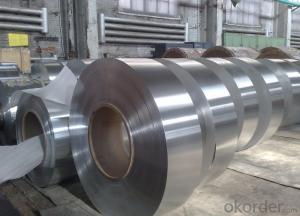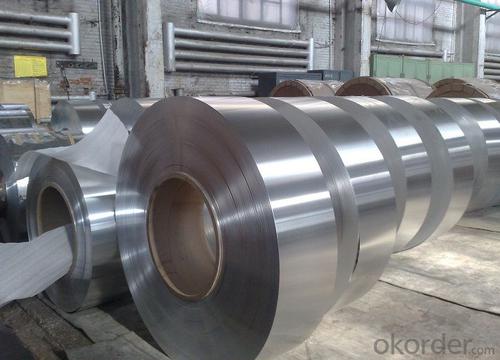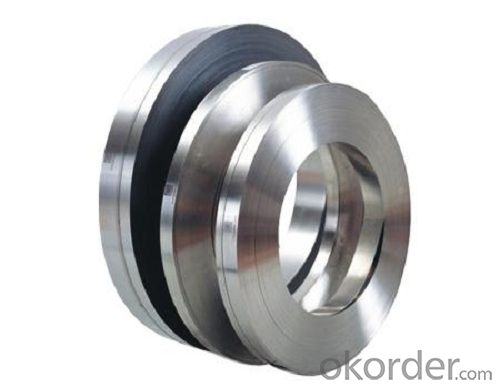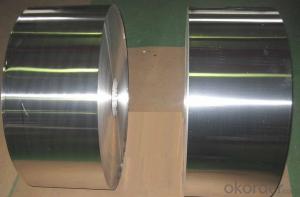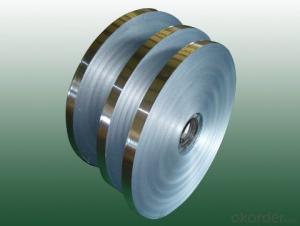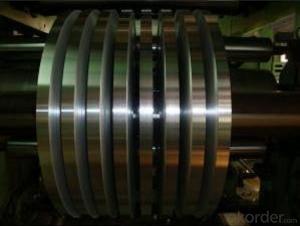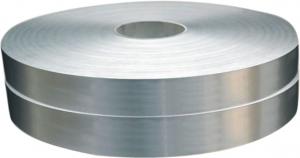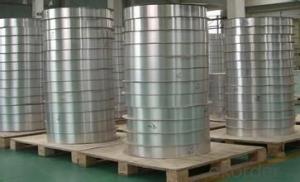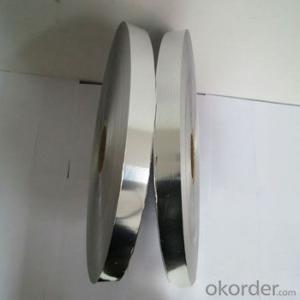Berkley Jensen Mill Finish Aluminum Strip for Capacitor Shell
- Loading Port:
- Shanghai
- Payment Terms:
- TT OR LC
- Min Order Qty:
- 2.5
- Supply Capability:
- 5000 m.t./month
OKorder Service Pledge
OKorder Financial Service
You Might Also Like
Mill Finish Aluminum Strip for Capacitor Shell
l Product Introduction
The Aluminum Strip is mainly used for refrigerator, cable ,capacitor shell material, steal-protection cover, cable sheathing, composite pipe and tube, water pipe etc. It has the property of deep drawing, high thickness accuracy, and low earring rate, etc.
l Features:
1) Alloy: 1100
2) Temper: O, Hx2, Hx4
3) Thickness: 0.20-0.5mm
4) Width: 150-1200mm
5) Dimensions can be produced according to your specifications
6) Very good elongation and anticorrosion
7) Generally used in industry and architecture industries
8) Suitable for making tableware, receptacles
l Specifications
Product Name | Aluminium Strips for capacitor shell |
Thickness | 0.2mm-3.0mm |
Width | 16mm-2000mm |
Alloy No | 2024,5052,5083,6061,7050,7075 |
Temper | O-H112 T3-T8 |
Surface | Flat |
Packaging | Export standard wooden pallets (as per requirements) |
Payment Terms | 30% T/T in advance as deposit,70% balance against the B/L copy or 100% irrevocable L/C at sight |
Minimum Order Quanlity | 5 ton pre size |
Delivery time | 25-30 days after receiving L/C or deposit |
Loading Port | Shanghai |
Remark | Specific requirement of alloy grade,temper or specification can be discussed at your request |
l Packaging & Delivery
Packaging detail: Covering with brown paper and plastic bag then packed with wooden plywood then directly loading into container for transshipment. For the thickness which is more than 1.50mm, one paper interleave into two sheets.
Delivery detail: within 30days
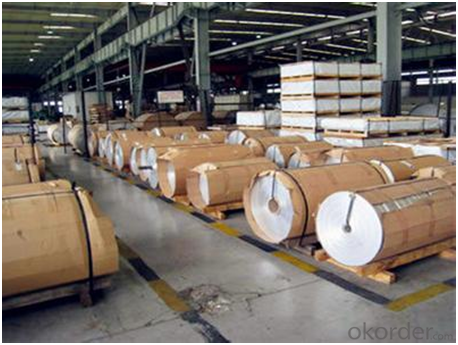
l Company Profile
CNBM International Corporation, China National Building Materials (Group) Corporation, is one of the largest companies in China building material & equipment industry, with 42,800 employees and sales in 2005 of US Dollar 4.395 billion. In 2006, China National Building Material Company Limited was listed on Hong Kong Stock Market with the stock code as 3323.
Aluminium Strip has always been one of the most popular products in CNBM. With advanced technic skills and equipment, CNBM has produced high quality aluminium strips that meet international standard.
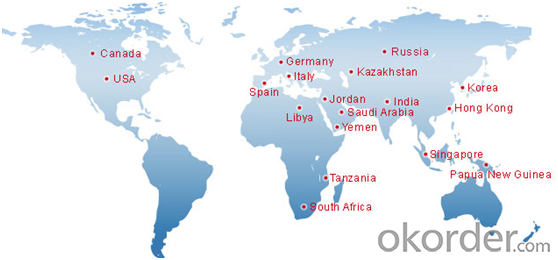
l Product Images
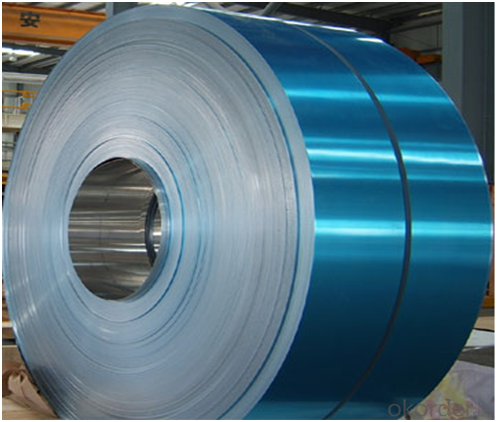
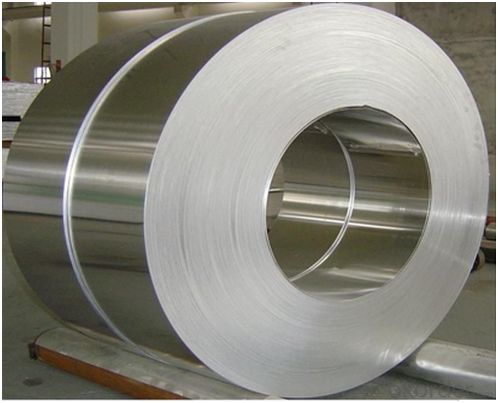

l Certificates
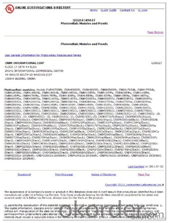
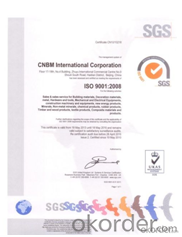
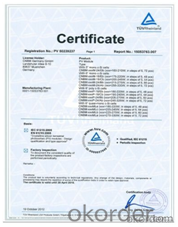
l FAQ
Q: Do you provide free samples?
A: Yes, free samples will be sent to you on freight at destination.
Q: Can I get your latest products catalogue?
A: Yes, it will be sent to you in no time.
Q: What is the MOQ?
A: 2.5 tons
Q: What are your payment terms?
A: We accept L/C, T/T.
- Q: Can aluminum sheet withstand heavy loads?
- Indeed, the durability of aluminum sheet is such that it can endure substantial loads. Renowned for its exceptional strength-to-weight ratio, aluminum proves to be an exceptional selection for endeavors necessitating both resilience and load-bearing capacities. Notably prevalent in sectors like aerospace, automotive, construction, and marine, aluminum sheets are frequently employed in scenarios involving weighty burdens. Moreover, the innate corrosion resistance of aluminum further fortifies its capacity to bear heavy loads for extensive durations. Nevertheless, it is crucial to take into account the precise grade and thickness of the aluminum sheet, as diverse alloys and thicknesses yield differing load capacities.
- Q: Can aluminum sheets be used in electrical applications?
- Yes, aluminum sheets can be used in electrical applications. Aluminum is a good conductor of electricity, and it is commonly used in various electrical components and applications. Aluminum sheets are often used as conductive materials in power transmission lines, bus bars, and electrical enclosures. They are also utilized in the manufacturing of capacitors, transformers, and heat sinks due to their excellent thermal conductivity properties. Additionally, aluminum sheets are lightweight and corrosion-resistant, making them suitable for electrical applications where weight and durability are important factors.
- Q: Can aluminum sheets be bent or formed without cracking or breaking?
- Indeed, it is possible to bend or form aluminum sheets without causing cracks or breaks; however, this outcome is contingent upon the thickness of the sheet as well as the bending or forming technique employed. Aluminum, being an exceptionally pliable material, can be easily manipulated into various shapes without fracturing. Nevertheless, if the sheet is excessively thin or if the bending or forming procedure lacks carefulness and precision, there is a possibility of cracks or breaks occurring. To mitigate this risk, it is imperative to utilize appropriate tools and methods, such as a bending brake or a rolling machine, and to ensure that the sheet is not subjected to excessive force or stress during the process. Furthermore, annealing the aluminum sheet prior to bending or forming can enhance its flexibility and diminish the likelihood of cracking. Ultimately, with the correct approach and necessary precautions, it is feasible to successfully bend or form aluminum sheets without encountering cracks or breaks.
- Q: What are the specific rules or codes that govern the use of aluminum sheets in residential construction?
- <p>Yes, there are special regulations related to using aluminum sheets in residential buildings. These regulations can vary by country, state, or municipality, but generally, they cover aspects such as material standards, fire resistance, structural integrity, and energy efficiency. For example, aluminum sheets must meet specific thickness and strength requirements to ensure structural safety. They must also comply with fire codes, which may require certain fire-resistant coatings or treatments. Additionally, energy codes may dictate the insulation value of aluminum sheets used in walls or roofs to improve thermal performance. It's crucial to consult local building codes and regulations to ensure compliance when using aluminum sheets in residential construction.</p>
- Q: What are the different methods of surface coating for aluminum sheets?
- There are various methods of surface coating available for aluminum sheets, each offering unique benefits and applications. Some of the most commonly used methods include: 1. Anodizing: This process involves creating a protective oxide layer on the surface of the aluminum by immersing it in an electrolytic solution. Anodizing provides enhanced corrosion resistance, improved durability, and can also be used to achieve decorative finishes. 2. Powder coating: Powder coating involves applying a dry powder onto the surface of the aluminum and then curing it through a heating process. This method provides a durable and attractive finish, with excellent resistance to abrasion, chemicals, and UV rays. 3. Painting: Aluminum sheets can be coated with conventional liquid paints to achieve various colors and finishes. This method allows for customization and offers good corrosion protection, but may not be as durable as other methods. 4. Cladding: Cladding involves bonding a protective layer, such as stainless steel or other metals, onto the surface of the aluminum sheet. This method provides superior protection against corrosion, impact, and extreme weather conditions. 5. Laminating: Laminating involves applying a thin layer of protective material, such as PVC or PET film, onto the surface of the aluminum sheet. This method enhances the sheet's resistance to scratching, staining, and fading, making it suitable for applications requiring long-term durability. 6. Chemical conversion coating: This method involves treating the aluminum surface with a chemical solution to create a thin, protective layer. Chromate conversion coating, for example, enhances corrosion resistance and improves paint adhesion. 7. Electrophoretic deposition (EPD): EPD involves immersing the aluminum sheet in a water-based paint solution and applying an electric current to deposit the paint particles onto the surface. This method provides uniform coating thickness and excellent corrosion resistance. Each of these surface coating methods offers specific advantages and is suited for different applications. Choosing the appropriate method depends on the desired properties, aesthetics, and the intended use of the aluminum sheets.
- Q: This question asks for methods to clean aluminum sheets to preserve their appearance.
- <p>To clean aluminum sheets and maintain their appearance, follow these steps: 1. Use a mild detergent mixed with warm water to create a cleaning solution. 2. Gently scrub the aluminum sheets with a soft cloth or sponge to avoid scratching the surface. 3. Rinse thoroughly with clean water to remove any detergent residue. 4. Dry the sheets immediately with a soft, dry cloth to prevent water spots. 5. For stubborn stains, use a non-abrasive cleaner specifically designed for aluminum. 6. Avoid using harsh chemicals or abrasive materials that can damage the aluminum's finish. Regular cleaning will help preserve the appearance and longevity of aluminum sheets.</p>
- Q: Can aluminum sheets be embossed or textured?
- Yes, aluminum sheets can be embossed or textured using various methods such as roll embossing or mechanical texturing.
- Q: there is a magnet for other type of nails except aluminum nails
- Not that I have heard of. The best way is manual hand pick up. If it is on concrete you might try making a pad out of a good stickey tape (turning the stickey part to the outside) that might speed up the process.
- Q: Carbon costs more than aluminum. But there are manufactures who make high quality alloy frames which costs just as much, if not more slightly than mediocre carbon frames.In your opinion, which is better, stiffer, and lighter?If you need examples....umm like Cervelo's S1 or CAAD9 compared to the lower quality carbon frames.
- A combo of both is nice. But if I had the choice, I would go stiffer frame (aluminum) with carbon stays. For a carbon frame, the carbon has to be decent quality, not like the carbon that is used for making Raleigh frames. Low quality!
- Q: How do aluminum sheets perform in terms of thermal expansion and contraction?
- Aluminum sheets have a relatively high coefficient of thermal expansion, meaning they expand more than other materials when heated and contract more when cooled.
Send your message to us
Berkley Jensen Mill Finish Aluminum Strip for Capacitor Shell
- Loading Port:
- Shanghai
- Payment Terms:
- TT OR LC
- Min Order Qty:
- 2.5
- Supply Capability:
- 5000 m.t./month
OKorder Service Pledge
OKorder Financial Service
Similar products
Hot products
Hot Searches
Related keywords
